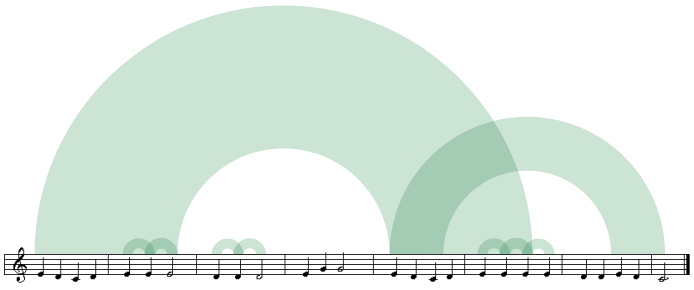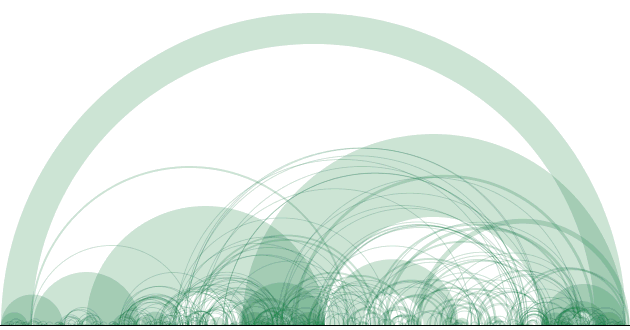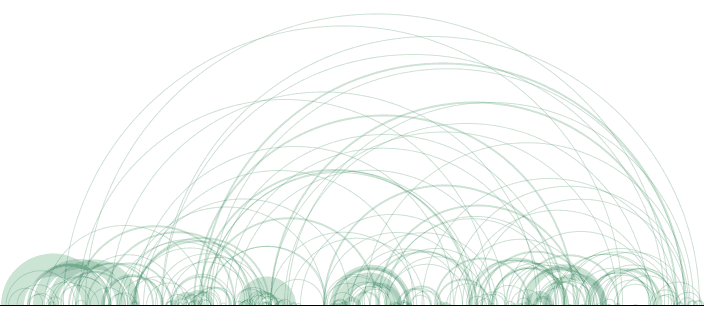 |
As a final example,
consider Bach's Minuet in G Major. The
diagram shows that the piece
divides into two main parts,
each made of a long passage played twice--or what
a musician would call an "AABB" structure.
It's not surprising to see this in a minuet,
which shows that
the matching diagram is picking out structures that correspond
to conventional notions of musical form.
The diagram, however, provides much more detailed information
than the simple "AABB" notation. For instance, you can see
that the A and B passages are
loosely related, as shown by the bundle of thin arcs
connecting the two halves of the piece. And the fact that the two
main arcs overlap shows that the end of the A
passage is the same as B's beginning.
Although the diagrams on this page show some
complex patterns and raise interesting questions,
they're only a first step. A useful
picture of a musical work would require, at the very
least, a matching algorithm that could
handle polyphony and
modulated patterns.
It would also be nice to add
interactive capabilities, allowing users
to change the scale of the diagrams,
view selected groups of matches,
and see the score underlying any pattern.
Finally, it would be wonderful
if the computer could
animate the diagrams
while playing the underlying music.
|



